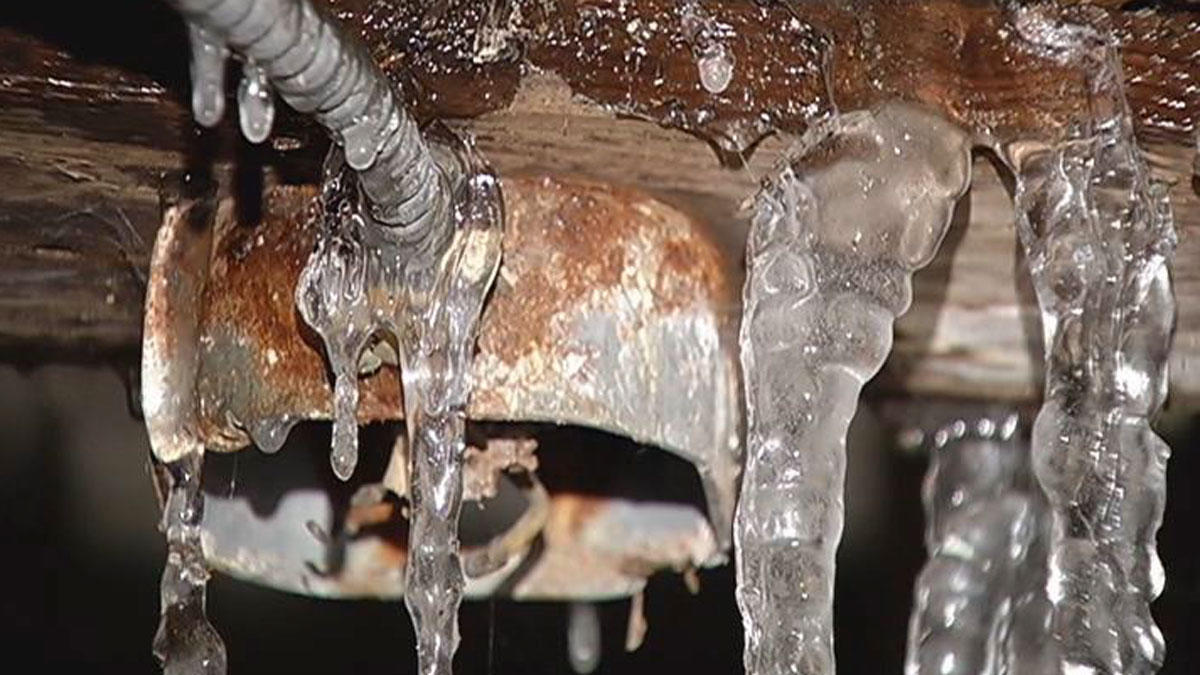Are you currently trying to find selective information concerning 6 Ways to Prevent Frozen Pipes?

Cold weather can ruin your plumbing, specifically by freezing pipes. Below's exactly how to stop it from occurring and what to do if it does.
Introduction
As temperature levels decrease, the threat of icy pipelines rises, potentially leading to expensive repairs and water damages. Comprehending exactly how to prevent icy pipes is crucial for house owners in cold climates.
Understanding Icy Pipelines
What creates pipelines to freeze?
Pipelines ice up when subjected to temperatures below 32 ° F (0 ° C) for prolonged durations. As water inside the pipelines freezes, it increases, taxing the pipeline wall surfaces and potentially creating them to burst.
Threats and damages
Icy pipes can lead to water system disruptions, building damage, and expensive fixings. Burst pipelines can flood homes and cause extensive architectural damage.
Signs of Frozen Piping
Determining frozen pipelines early can avoid them from bursting.
Just how to identify icy pipes
Seek decreased water circulation from faucets, uncommon odors or noises from pipelines, and visible frost on subjected pipelines.
Prevention Tips
Shielding vulnerable pipelines
Cover pipes in insulation sleeves or utilize warmth tape to protect them from freezing temperatures. Concentrate on pipelines in unheated or exterior areas of the home.
Home heating strategies
Maintain interior spaces sufficiently heated up, especially locations with pipes. Open cabinet doors to permit cozy air to distribute around pipes under sinks.
Shielding Outside Plumbing
Yard pipes and outdoor taps
Detach and drain pipes garden hoses prior to winter. Mount frost-proof faucets or cover outside faucets with insulated caps.
What to Do If Your Pipes Freeze
Immediate actions to take
If you suspect icy pipelines, maintain faucets open up to ease pressure as the ice melts. Use a hairdryer or towels taken in hot water to thaw pipelines slowly.
Long-Term Solutions
Architectural modifications
Consider rerouting pipes away from exterior walls or unheated locations. Include extra insulation to attics, cellars, and crawl spaces.
Updating insulation
Purchase top notch insulation for pipes, attics, and wall surfaces. Correct insulation aids preserve constant temperatures and reduces the danger of icy pipelines.
Verdict
Avoiding icy pipelines calls for aggressive measures and quick reactions. By comprehending the reasons, indicators, and safety nets, home owners can protect their pipes throughout winter.
6 Proven Ways to Prevent Frozen Pipes and Protect Your Home
Disconnect and Drain Garden Hoses
Before winter arrives, start by disconnecting your garden hoses and draining any remaining water. Close the shut-off valves that supply outdoor hose bibs and leave the outdoor faucet open to allow any residual water to drain. For extra protection, consider using faucet covers throughout the colder months. It’s also important to drain water from any sprinkler supply lines following the manufacturer’s directions.
Insulate Exposed Pipes
Insulating your pipes is an effective way to prevent freezing. Pipe insulation is readily available at home improvement stores and is relatively inexpensive. Pay close attention to pipes in unheated areas such as the attic, basement, crawl spaces, or garage. Apply foam insulation generously to create a buffer against the cold. You can also wrap your pipes in heat tape or thermostat-controlled heat cables for added warmth.
Seal Air Leaks
Inspect your home for any cracks or openings that could let in cold air. Seal any holes around the piping in interior or exterior walls, as well as the sill plates where your home rests on its foundation. Additionally, make sure to keep your garage door closed unless you’re entering or exiting. Leaving it open creates a significant air leak that can lead to frozen pipes.
Allow Warm Air Circulation
During cold snaps, it’s essential to allow warm air to circulate evenly throughout your home. Leave interior doors ajar to promote better airflow. Open kitchen and bathroom cabinets to help distribute heat consistently around the rooms. If you have small children or pets, be sure to remove any household chemicals or potentially harmful cleaners from open cabinets for safety.
Let Faucets Drip
A small trickle of water can make a big difference in preventing ice formation inside your pipes. When temperatures drop significantly, start a drip of water from all faucets served by exposed pipes. This continuous flow helps prevent the water from freezing. Additionally, running a few faucets slightly can relieve pressure inside the pipes, reducing the chances of a rupture if the water inside does freeze.
https://choateshvac.com/6-proven-ways-to-prevent-frozen-pipes-and-protect-your-home/

Do you enjoy reading up on Winter Plumbing Precautions: Preventing Frozen Pipes? Write a review directly below. We would be happy to know your opinions about this write up. In hopes that you come back again later on. Sharing is caring. Helping others is fun. Kudos for your time. Please come visit our blog back soon.
Recurring Service Plans